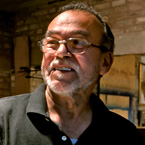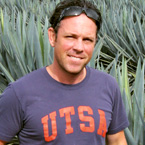The Paseo A Stroll Around Campus
Establishing a Legacy
Mary E. McKinney, a quiet, unassuming teacher, left an estimated $22 million bequest to UTSA, the largest in school history.
The Reality of Hope
The works of Gabriel Marcel had such a profound effect on philosophy professor Jill Graper Hernandez that she's now writing a book on the French existentialist's ideas of ethics and hope.
Roadrunner Sports
Sports briefs, plus a profile of senior volleyball player Kendra Rowland, who has a passion for dance and wears bracelets with a message.
In Brief
The UTSA Orchestra performed with '70s rock band Kansas, the HSS gets a new name, UTSA ranks among the best for embracing veterans as students, plus more campus news.
By the Numbers
Learn about the Class of 2014, find out research spending totals for UTSA in FY 2010 and how many new faculty were hired, plus other interesting stats.
//////////////////////////////////////////////////////////////////////////////////////
Community Uniting Our Alumni

Homegrown Artist
Jesse Treviño, M.F.A. '78, was thinking like an artist, even as he lay dying in a rice paddy in Vietnam.

Spirit Filled
Charlie Paulette '92, M.B.A. '01, has had a remarkably successful career as a businessman and marketing strategist.
Class Notes
Class Notes is a compilation of alumni submissions and reports from newspapers and other media outlets.
Editor's Note
Change is scary, isn't it?
It's also invigorating and thrilling. And maybe, just maybe, it forces you to think beyond the obvious, to stretch and grow.
Sombrilla has changed. We are bolder, with large colorful fonts and vivid photography. But though it may look different, the heart of Sombrilla remains untouched.
For 26 years, Sombrilla has told the UTSA story through strong writing and creative illustrations and photography. We've covered new university presidents, the thought-provoking research conducted by our faculty and the accomplishments of our students and graduates. We've followed our alumni long after they crossed the stage. And we've documented the university's metamorphosis from a mostly commuter campus with little student life to a thriving and bustling one with (yes, finally!) a football team.
Those things won't change.
The decision to give Sombrilla a facelift didn't occur overnight. For more than a year, we wrestled with what we would alter and how. Our main goal: to make the magazine reflective of today's UTSA. The last time Sombrilla was redesigned was in 2002. UTSA certainly isn't the same university that it was then.
How would you describe today's UTSA? We think it's vibrant, multicultural, youthful, academic and fun. That's what Sombrilla should be. And that's what it is now.
Probably the first thing you'll notice is our new cover. The big, white letters of the 2002 Sombrilla have been replaced by a hand-drawn, triple-line font, reminiscent of the logo from the 1968 Summer Olympics in Mexico. That logo, based on traditional forms, was created to honor the Mexican culture. We use it now as a way to showcase the diversity inherent on our campuses. The lines are also a tribute to our namesake, the Sombrilla, UTSA's identifying landmark and architectural centerpiece.
Inside, you'll see shorter news items scattered throughout the front of the magazine, now called The Paseo. We felt that paseo, which is "stroll" in Spanish, was the perfect word to describe the journey we take you on as we highlight UTSA's pathway to knowledge and to Tier One.
In the back of the magazine you'll notice a more robust alumni section called Community. This section helps you reconnect with your classmates as well as with the university. And we now feature Alumni Association news so that you always have a way to come back home.
It's true that Sombrilla looks entirely different. But it remains your magazine, your way to dialogue with the university. That's something that simply won't change.
We hope you enjoy your new Sombrilla.
Saludos,
—Lety Laurel







